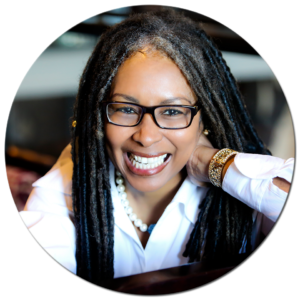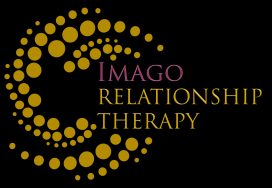I am swinging to the other side of the relationship pendulum in this article because I think it’s important to talk about how we are being seduced into believing that our holy dance is a dance of Fear. Well, it’s not. However, there are impulses and evil forces in contemporary society promoting separations rather than unity. These separations are more dysfunctional than functional. The result is hostility and divisiveness. When our first impulse is to divide and separate ourselves, it is difficult for us to be anything other than separate.
“Otherizing” an Evil Force
We have a long history of experiencing the lack of compassion, abuse of power, destruction of hope and devastation of our lives that evolve from the force of dysfunctional separating called “Otherizing.” “Otherizing” is one of the ways we distinguish those we deem worthy/superior/valuable from those we deem unworthy/inferior/invaluable. “Otherizing” can be overt or covert.
We use the term “Otherness” in Imago Relationship Therapy as a way of illuminating and validating the differences between us. In Imago therapy, we help clients learn to embrace, celebrate, advocate, and appreciate each other’s “Otherness” rather than fear it.
What we fail to understand is that “Otherizing” is a very powerful, dynamic relational force that can permeate all aspects of our lives. We see the full force of “otherizing” in our current political system. “Otherizing” is what we do and how we act toward those who are different from ourselves. That is, we look with suspicion at those who look, act, speak, and seem different—unless we know them. The other painful and debilitating relational aspect of “Otherizing” is this: At the same time we “Otherize” folks who are different from us, we also “Otherize” ourselves. The next step after separating and dividing us through “Otherizing” is annihilation—reprehensible acts of violence or the devaluing of the human family.
“Otherizing” is Based in Fear
“Otherizing” is a discourse of Fear. “Otherizing” actions and behaviors are predicated on fear—fear of the unknown.
Fear of uncertainty. Fear of our own shadow. Fear of the “Other.”
Fear of our own unexpressed emotions and a trillion other fears.
Fear is a liar. Fear is dark energy of enormous shape and size that can consume us by feeding us with more lies and more distortions. Fear is a learned, conditioned and primal trait.
Fear drives us to go against our own best interests and stay locked in a corner, afraid to venture beyond the familiar. Fear causes us to stay with our tribe, even when the tribe leaves us miserable, unfulfilled, unsatisfied, unhealthy, angry, resentful, frustrated, and countless other negative states of mind.
The Neuroscience of Fear: Brain Theory
Fear is rooted in the primal, reptilian brain, the part of our anatomy that is tasked with overseeing our survival. It is one of three main parts of the brain and is located in the brainstem and cerebellum. Our reptilian brain is crude, powerful, and hard to ignore, like a dinosaur. The reptilian brain exists in all living creatures and is responsible for instinctual behaviors that lead us to flight, fight, flee, freeze submit—behaviors that lead to dominance and aggressive responses. The sole purpose of the reptilian brain is to keep us safe. That is it!
The reptilian part of our brain allows us to float along without consciousness when things are okay. It forces us to get confused, run for cover, say vile things to our partner, hide our money, file for divorce or simply collapse when things are going wrong. The reptilian brain blinds us to the details—what we don’t see doesn’t bother us—can’t bother us. The reptilian brain does not ask questions or seeks solutions—it just reacts. The cerebral cortex or new brain is the part of the brain that thinks, remembers, decides, plans, is capable of holding two realities and creates—it’s the human brain—the relational brain.
The Mind-Body Disconnect
We cannot afford to sacrificially escape our bodies (the sanctuary of our hearts) by over-spiritualizing our minds. If our body and mind are not integrated-a separation between the two exists. This separation is caused by feeling overwhelmed by the emotional and primal instincts (in the brain). This sense of being overwhelmed leads to an internal disconnect in which we “Otherize” not only ourselves, but other folks. As mentioned earlier we become a stranger to ourselves and a stranger to others.
Internal disconnects can occur in any number of ways. They can be influenced by others, or they can be self-induced. When we fall under the cloud or control of a hot-headed employer-we disconnect. When we fall under the cloud of lying political leaders-we disconnect. When we fall under the sway of agitators, fanatics, dogmatists, criminals, difficult partners we become disconnected to ourselves.
When we fall under the emotional affects of those who encourage us to fear the “Other,” (Blacks, whites, gays, heterosexuals, red-heads, heavy people, drug addicts, women, children or anything) we become disconnected to ourselves. When we fall under the influence of those who speak poisonous words, we become disconnected to ourselves.
Self-Induced Disconnection
Disconnects that are self-induced include allowing ourselves to fall under the power of our own anger; under the sway of our own fears; under the emotional power of our resentments; of our own greed and under the emotional collapse of our own self-absorption—we disconnect from ourselves. When all is said and done, we are more similar than different. Yet, we all have the same desire for health, happiness, fulfillment, security, comfort, acceptance and love – we all share a common humanity. When we are overcome by the disconnection, we lose connection with our full Selves and from others and the divide is painful, isolating and lonely.
Overcoming Fear of Differences by Stepping Outside the Comfort Zone
Life happens outside of our comfort zone. We have to take a chance and step out of our own comfort zone in order to feel more integrated within ourselves. This helps us to get past the distorted, convoluted stories we have created about ourselves and others.
Once we become liberated from our own convoluted and distorted thought-processes about others, we are free to take the next step and reach out to those who are different from us – folks we “Otherize.” Getting outside of ourselves is where we learn about the experiences of other people.
So we need to risk and go beyond our assumptions, judgments and preconceptions of who this “Other” is. Our preconceptions and judgments are just fear stories made up by our primal brain in an effort to keep us safe. However, we have the capacity to utilize the new relational/human brain, thus stepping outside of our comfort zones and check to see if our assumptions are true. Just because we believe something doesn’t necessarily make it True for someone else is the approach we want to take
It’s Your Turn
- What does it mean to be human?
- How easy is it for you to talk to someone you perceive as different?
- What preconceptions, judgments, assumptions or stories do you make up about those who are different?
- How easy is it for you to emotionally collapse under someone else’s negative perceptions?
- How easy is it for you to collapse under the sway of your own intense, confusing or turbulent emotions?
- How easy is it for you to recognize that your assumptions about others need to be questioned?
- How easy is it for you to accept that others may not think and act the way you you?
The 1st Step in Healing the Divide=Self-Awareness
All change begins with self. We need to stay woke! Stay conscious through—increasing self-awareness and insight. When we shine the light of consciousness on our own shadow/darkness/fears, we bring light and brilliance to our own blind spots and start using this awareness to heal the divide in ourselves.
When we shut ourselves down and close the door (door=mind) to self-awareness, then the darkness of the reptilian brain and the emotional roller coaster becomes the prevailing force. And when we attempt to understand the drives, motives, fears and impulses of those who are different from ourselves, we can put ourselves in their shoes (this is empathy) and act from a more compassionate, aware, mature and evolved place.
Healing the divide in ourselves is not a difficult thing. It takes time and increasing self-awareness, which allows for the flow of empathy, understanding, compassion and self-love. And when this happens, we open ourselves up to learning new things, we become not only more connected to others, but even more importantly, more connected to ourselves. This is how we change and heal not only ourselves but the world.
Stay Woke & Stay Conscious,
Blessings & peace, Paula






